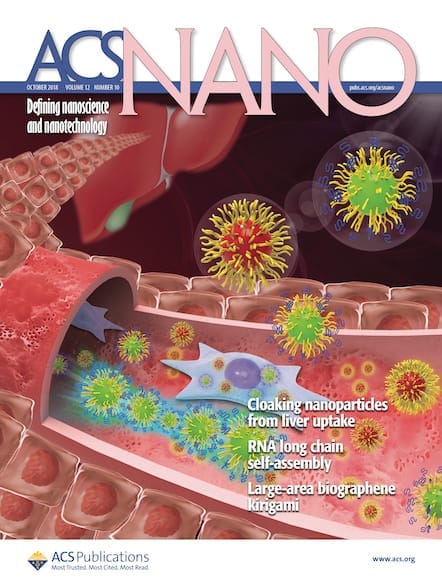Inspired by armies of ants that link together to form living structures such as bridges and rafts, researchers have directed millions of nanoparticles to span the gap between two electrodes, forming an electrical wire. The technology could provide a new way to repair broken microcircuits and make tiny programmable microswitches, the researchers say. Roboticists dream […]

Inspired by armies of ants that link together to form living structures such as bridges and rafts, researchers have directed millions of nanoparticles to span the gap between two electrodes, forming an electrical wire. The technology could provide a new way to repair broken microcircuits and make tiny programmable microswitches, the researchers say.
Roboticists dream of emulating the natural swarming behavior of insects and birds to make robots that work together on construction tasks or search-and-rescue missions. Scientists have also been engineering swarming particles that could have applications on the microscopic scale, such as tracking down tumors and delivering drugs.
Li Zhang, a mechanical and automation engineer at the Chinese University of Hong Kong, and his colleagues are designing microswarms for electronic applications. In 2018, they reported using oscillating magnetic fields to control millions of magnetic iron oxide nanoparticles in an ethanol suspension. Changing the field’s strength relative to the fluid’s resistance made the particles line up into ribbon-like chains. By programming other parameters of the magnetic field, such as the oscillation frequency and angle, the researchers could elongate and shorten the ribbons, and make the nanoparticles split up and regroup. They could also make the swarms move through a maze.
In the new work, the researchers wanted to see if the nanoparticles could form a bridge across an electrical circuit, so they coated the iron oxide nanoparticles with a thin gold layer to make them electrically conductive as well as magnetic. They placed an ethanol suspension of the nanoparticles on a flexible plastic substrate patterned with two electrodes and used an oscillating magnetic field to coax the particles to form a ribbon-like swarm. The researchers steered the swarm between the electrodes and elongated it to bridge the gap. Removing the excess suspension and drying the substrate made the ribbon of nanoparticles stick to the plastic surface, creating a thin wire that conducted electricity. Using ethanol “should not be problematic for electronic circuits,” Zhang says.
Microswarms could become high-precision tools to make or repair wiring in microchips. “Conventional strategies for repairing circuits such as manual soldering or dropping conductive inks usually have low precision,” Zhang says, so they carry a risk of short circuiting, especially for devices with closely arranged wires. In contrast, he and his colleagues have used their swarm to fix a broken wire without affecting other wires just 200 µm away.
“This is a really innovative idea,” says Michael J. Sailor, a chemist at the University of California, San Diego, who studies the use of nanoparticle swarms for drug delivery. The swarm-assembled wires might not perform as well or reliably as state-of-the-art microelectronic circuitry, he says, but “the real advance here is…the new paradigm for construction of nano- or microscale objects. These types of tools enable a huge range of new materials, devices, and applications.”
